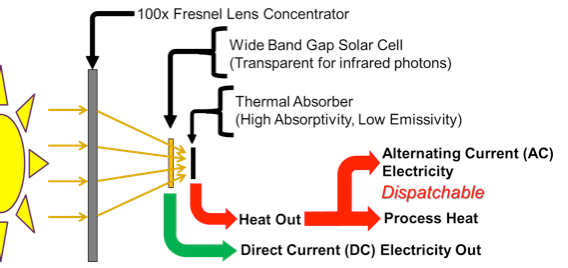Using power from the sun to replace the current massive use of fossil fuel to power the planet is truly a modern day “Holy Grail” for future energy economies. At an average solar irradiance of 1.76 x 1017 watts, solar power is a near-infinite source of terrestrial power. If solar power could be economically and resourcefully converted to other useful energy and power sources, it would allow earth to migrate from generating a huge carbon footprint, due to fossil fuel use, to being carbon neutral.
However, our modern day society has developed, and depends, on a global scale fossil fuel-based energy economy. Currently, no available solar power converter can match the economics of fossil fuel without significant government-funded financial subsidies. Additionally, the large-scale use of solar and wind-based renewable energy solutions is hampered by the intermittency at which power is produced. For example, the peak of the sun’s intensity occurs during the middle of the day, while the peak for customers’ energy demand, for residential applications, occurs later in the evening. In order to match the ever-changing supply and demand energy cycle, energy needs to be stored, and the conversion of electricity to stored energy involves energy losses.
The technology we propose seeks to provide an alternative pathway towards addressing both concerns. First, by using concentrated sunlight along with low-cost components, we expect to reach costs of less than $1 per peak watt of solar power. This is a significant cost reduction in currently-available alternative energies, which have costs between $3-7 per watt. Second, our system addresses the problem of matching supply and demand by using thermal storage components that make direct use of heat generated by the solar converter.
The converter design, as shown schematically below, is novel in that a solar cell is mounted above a thermal absorber, which lies at the focal point of a solar concentrator lens. The solar cell will be designed to capture and convert high energy photons (those that correlate to blue and green wavelengths of light). All remaining photons will then pass through onto the thermal absorber, which will be a low-cost tungsten-based device designed to produce heat at 350°C. This heat will be partially stored for later use when demand increases, as well as used for electricity generation or direct heating applications. When combined, these components are capable of converting 40% of the sun’s energy into usable energy in the form of electricity and heat. In addition, a 25-year lifetime is expected.


